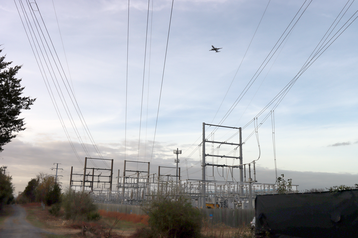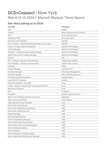Politicians in the US have called for energy watchdog the Federal Energy Regulatory Commission (FERC) to spell out how it will cope with growing electricity demand from AI data centers.
Republican congressperson Cathy McMorris Rodgers, who chairs the House Energy and Commerce Committee and Energy, Climate, and Grid Security Subcommittee chair Jeff Duncan have written to FERC requesting that the agency provide information on how it will deal with rising demand.
FERC asked questions on AI data centers
The letter points out that, after years of “minimal growth,” electricity demand in the US is projected to grow at a significant pace through to the end of the decade, with the rapid build-out of powerful data centers designed to run AI workloads being cited as a key reason for this change.
DCD reported last week that electricity use across the US had risen one percent since 2019, with growth focused on ten states considered data center hotspots.
“It is anticipated that much of this demand growth will come from a surge in the number of data centers and the growing uses of AI by data centers, onshoring of industry and manufacturing, and increased electrification,” the congresspeople said.
“Estimates show annual growth of five to six percent through the end of the decade, a tenfold increase in the growth rate from current levels. By the end of the decade, data centers, which are driving increases in electricity demand, could consume as much as 9.1 percent of all electricity in the United States.”
The pair have asked a number of questions of FERC, and given it a deadline of July 30 to respond to their queries. These include what the agency is doing to ensure demand can be met and the effect it will have on prices. They have also requested information on whether FERC is monitoring the potential for merchant generators to enter into behind-the-meter agreements with data centers.
PJM in the spotlight over load forecasting
Data center power use in the US is expected to double by 2030, according to a report from Newmark, with total consumption reaching 35GW.
With this in mind, it’s no surprise concerns are being raised about how the grid will cope. One power company, PJM, which serves Virginia and the wider Mid-Atlantic region, has recently been taken to task for providing what have been described as “inconsistent” and “speculative” utility load forecasts about upcoming demand.
Consumer rights group the Maryland People’s Counsel, along with similar organizations from Illinois, Ohio, Delaware, and North Carolina, have asked for more clarity on how PJM puts the forecasts together, because it said the utility’s current approach fails to distinguish between likely load increases and speculative ones.
Forecasts have previously been made based on unconfirmed data center developments, as well as varying criteria for load growth, the People’s Counsel said. This has led to a lack of clarity which is holding back investments in the grid, which could in turn cause customer bills to rise.
“Load forecasts are a critical step in a process that can trigger massive transmission investments that flow through to utility customer bills,” said David S. Lapp from the Maryland People’s Counsel. “PJM’s lack of clear guidance on what utilities should include in their forecasts leaves customers vulnerable to utility investments that may never be useful. And those costs could be imposed on customers across the 14 PJM jurisdictions even if just one utility’s over-optimistic forecast turns out to be flawed.”
PJM said in January it expects grid load in its transmission zone to increase by 40 percent by 2039.




